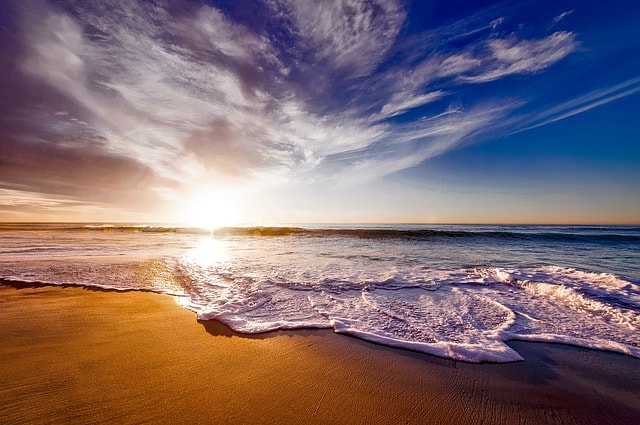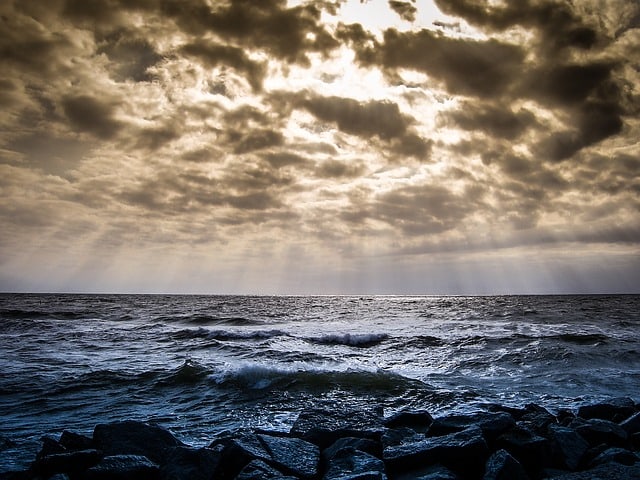There are so many oceans in the world such as the Atlantic, the Pacific, Arctic, Indian and the Southern oceans. While the ocean is the most amazing place on earth with beauty, islands, wildlife and so much mystery to be solved, only a fraction of the mysteries have been explained and there is still much more to be discovered.
Still, the oceans are considered to be the least unexplored wilderness on earth. Just as the oceans are breathtaking and intriguing, they equally hold an enormous potential for great discoveries. Among the discoveries that can be made include understanding the potential for life and even life on it, discovering new species and geologic activities, and the unexplored islands.
This clearly shows that the possibilities in the oceans are endless. Further exploring it may improve our understanding and teach us more about the planet which we live in while stretching our imagination.
To show you ideas about the surprises in the ocean’s surface, here are the 35 super phenomenal facts about the earth’s oceans.
- A great percentage of the earth’s surface is covered by oceans and it accounts for 70%. Further the ocean has an average depth of over 12,400 feet. The ocean is still in a state of perpetual darkness being that light cannot penetrate over 330 feet below the water’s surface.
- As the earth is rotating, the moon and the sun exhibit gravitational pulls which acts on the ocean water causing ocean tides. The movements affect the stability of the waters and cause tides to occur on the surface of the waters.
- There are so much marine life forms in the oceans over hundreds of thousands and some are yet to be discovered which shows that there are millions of marine life forms. Studies show that for every species of marine life that we are aware of at-least three more are yet to be discovered. They range from big animals to tiny microbes like the blue whales which are the largest animals in the oceans.
- The oceans act as a means of transport. They are frequently used by various companies which ship their products from one port to the other across the oceans. The ocean is used to transport products such as oils and huge cargo that cannot be transported by planes or trains over continents. The oceans are thus the only bulky transport means that connects all of the world’s continents.
- The largest ocean on earth which also covers approximately 30% of the earth’s surface is the Pacific Ocean.
- The largest ocean, the Pacific Ocean’s name means “peaceful sea”. It originates from the Latin name Tepre Pacificum.
- The Mariana trench which is the deepest ever known area of the earth’s ocean has a very deep point of approximately 11000 metres (36000 feet). It is located to the east of the Mariana Islands which is in the western Pacific Ocean
- As compared to earths other oceans, the Pacific Ocean has around 25000 varieties of islands.
- The Pacific Ocean has some unique features like the fact that it is surrounded by the Pacific Ring of Fire which hosts a large number of active volcanoes. Once these volcanoes erupt, they affect the locations of the plates causing them to either decrease or increase in size. They also lead to very strong waves known as “Tsunami’s” in the oceans and earthquakes when they reach land.
- The Atlantic Ocean is the second largest ocean on Earth which covers more than 21% of the earth’s surface.
- The Atlantic Ocean’s name has unique meaning which is known as Atlas of Greek mythology.
- The popular Bermuda triangle is located in the Atlantic Ocean.
- The third largest ocean on earth is the Indian Ocean which covers approximately 14% of the earth’s surface.
- The Arctic Ocean has some unique features, like during winter it is completely frozen and covered in sea ice.
- The Southern ocean is considered by some as part of a larger ocean however, it is an ocean on its own. It encompasses the area of water which encircles Antarctica.
- The first female ever to fly solo across the Atlantic Ocean was known as Amelia Earhart and this was in 1932.
- All these oceans on the earth’s surface contain just enough amount of water able to fill a cube with edges more than 1000 kilometers, about 621 miles in length.
- The earth’s oceans are all unique in their own way. The only planet with large water bodies on its surface is the earth. The planet is positioned in such a way that it is neither too hot nor too cold to make the waters on the surface to evaporate to the space; rather this state is maintained by the adequate amount of atmospheric pressures
- Water on the earth’s surface takes about 1000 years to travel across the globe. The oceans on the earth’s surface do not only have tides, waves and surface currents but also a constantly moving system of deep-ocean circulation which is driven by salinity and temperature.
- The longest known mountain range in the globe is found under ocean water. It stretches over 56,000km and it runs along the centre of the ocean basins. It moves through the centre of the Atlantic Ocean directly into the Pacific and Indian Oceans. It is known as Mid-Oceanic Ridge and it is a mountain chain. It has peaks which are very high as compared to those in the Alps. It accounts for 23% of the earth’s total surface.
- The Great Barrier Reef which is the world’s largest living structure is found in the oceanic waters. This structure can be seen from the moon and it measures around 2,600km.
- The oceans are considered to be the world’s largest and mega museum. The reason for this is because there are much more artifacts and even remnants of history in the oceans as compared to the worlds museums combined. 3.1 billion years ago life started in the oceans and there is much history to be learned. The land dwellers only appeared later, 400 million years ago. Moreover, the world’s best historical moments are recorded in the deep sea.
- The fastest fish in the ocean are marlin and swordfish which reach speeds of 121kph when in quick bursts. What’s more, around 94% of the life on earth is aquatic.
- The oceans greatest resources are oil. Around one third of the world’s oil emanates from offshore fields in our oceans.
- The arctic releases 10,000-50,000 icebergs each year. As usual, icebergs have four year life span and the amount in Antarctic regions is not estimable.
- Antarctica is known to possess as much ice as the water in the Atlantic Ocean.
- The top ten feet of the ocean waters holds just as much heat as the whole atmosphere.
- Around 90% of all volcanic activities take place in the oceans leading to the various tsunamis that destroys property and claim the lives of many people living close to the oceans.
- The oceans supply humans with seafood and fish which is a key source of protein for many people. The ocean also provides marine plants and seaweed which are used in manufacturing chemicals, food, construction materials and the generation of energy.
- The mean average temperature of the oceans is around 39 degrees Fahrenheit or 2 degrees Celsius.
- Point Nemo is the most remote point in the oceans. It is also referred to as the pole of inaccessibility. It is a spot in the ocean waters close to Ducie Island.
- The oceans have around 50 times as much carbon as there is in the atmosphere.
- Recent discovery shows that as the Atlantic Ocean gets bigger while the Pacific Ocean gets smaller. The tectonic forces led to the formation of oceans on the earth surface with various sizes. Today, there is increased volcanic activity and the Atlantic Ocean continues to grow at a rate of five centimeters each year since new sea floors are created. The Pacific Ocean is shrinking by around two to three centimeters annually. This is due to the plate tectonics continuing to submerge under other plates. The pacific’s ring of fire is responsible for the above activities.
- The oceans have rogue waves. The rogue waves in this case are those that have heights which are more than twice the prevailing conditions.
- When comparing the sizes of the oceans and the earth, the oceans are very small even though they may seem vast.
- Around half of the oxygen that we breathe is produced directly from the ocean. The ocean has sea weeds and even grasses together with phytoplankton that produces majority of the oxygen. Phytoplankton is microscopic single celled organisms which have the ability to photosynthesize. During the time of photosynthesis these organisms remove carbon dioxide from the sea water and then release oxygen in return. However, the carbon remain part of the organisms.







